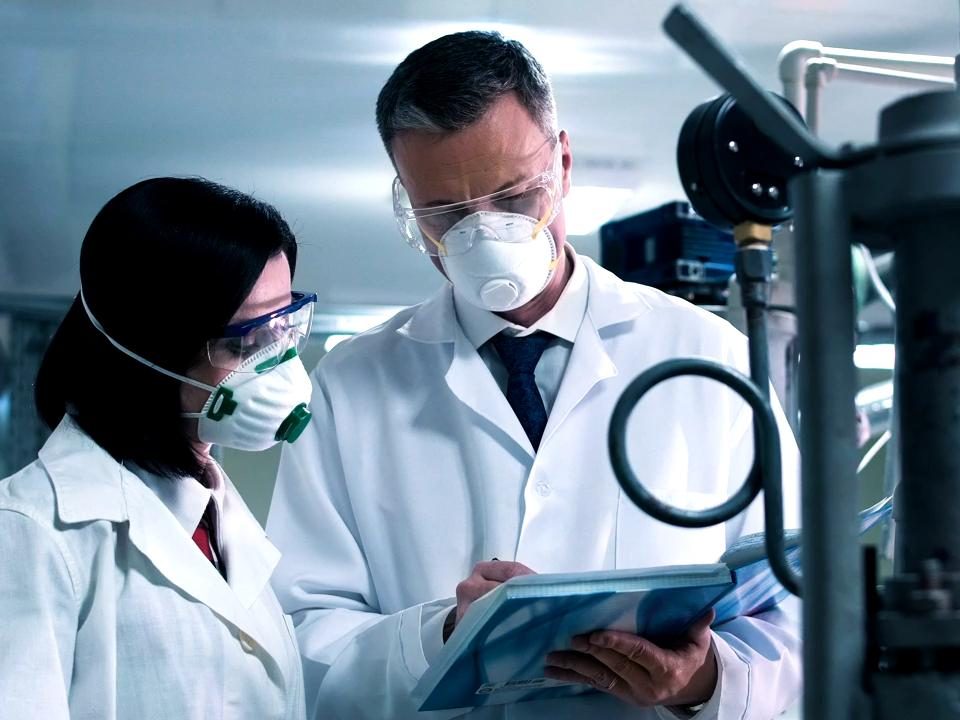Ethylene Oxide Sterilization: Ensuring Worker Safety in Healthcare Facilities – The Safety Master

Chemical Exposure Risks: Handling and Storing Hazardous Materials on Construction Sites – The Safety Master
February 23, 2024
Hazard Communication in Construction: Understanding Labels and Safety Data Sheets
February 24, 20241. Introduction
1.1 What is Ethylene Oxide (EtO)?
In healthcare facilities, ensuring equipment and instruments are thoroughly sterilized is crucial to prevent infections and maintain patient safety. One method commonly employed is ethylene oxide (EtO) sterilization.
1.2 Importance of Sterilization
Sterilization eliminates all forms of microbial life, including bacteria, viruses, fungi, and spores, ensuring that medical devices are safe for use on patients.
2. Understanding Ethylene Oxide
2.1 Properties of Ethylene Oxide
EtO is a colorless, flammable gas with a sweet odor. It is highly reactive and penetrates packaging materials and small crevices, making it effective for sterilizing medical equipment.
2.2 Applications in Healthcare
EtO sterilization is widely used in healthcare for heat-sensitive devices such as surgical instruments, catheters, and implants.
3. Risks Associated with EtO Exposure
3.1 Health Hazards
Exposure to EtO can cause respiratory irritation, headache, nausea, and in high concentrations, it may lead to more severe health issues, including cancer and reproductive effects.
3.2 Occupational Exposure Limits
Regulatory bodies like OSHA have set permissible exposure limits (PELs) to protect workers from the harmful effects of EtO exposure.
4. Safety Measures for Workers
4.1 Engineering Controls
Implementing engineering controls such as local exhaust ventilation systems helps minimize EtO exposure by capturing and removing the gas at the source.
4.2 Personal Protective Equipment
Workers should wear appropriate PPE, including respirators, gloves, and goggles, to protect themselves from EtO exposure.
5. Monitoring and Detection
5.1 Gas Monitoring Systems
Continuous gas monitoring systems are essential for detecting EtO leaks and ensuring levels remain within safe limits.
5.2 Exposure Monitoring
Regular monitoring of worker exposure levels through air sampling and biological monitoring helps identify any potential risks and allows for timely intervention.
6. Training and Education
6.1 Importance of Training
Proper training on EtO hazards, safe handling procedures, and emergency protocols is vital for all healthcare personnel involved in sterilization processes.
6.2 Regular Education Programs
Ongoing education programs keep workers updated on the latest safety regulations and best practices, ensuring a culture of safety within the facility.
7. Regulatory Compliance
7.1 OSHA Regulations
Healthcare facilities must adhere to OSHA regulations, including proper labeling of EtO containers, conducting regular workplace inspections, and providing adequate training to employees.
7.2 EPA Guidelines
In addition to OSHA regulations, healthcare facilities must also comply with EPA guidelines regarding EtO emissions and waste management.
8. Best Practices for EtO Sterilization
8.1 Equipment Maintenance
Regular maintenance and calibration of sterilization equipment are essential to ensure its effectiveness and prevent leaks.
8.2 Ventilation Systems
Properly designed and maintained ventilation systems help control EtO concentrations in sterilization areas, reducing the risk of exposure to workers.
9. Case Studies
9.1 Successful Implementation
Examining case studies of healthcare facilities that have successfully implemented robust EtO safety measures can provide valuable insights and best practices.
9.2 Lessons Learned
Analyzing past incidents and near misses helps identify areas for improvement and reinforces the importance of strict adherence to safety protocols.
10. Future Trends
10.1 Advancements in Technology
Continued research and development in EtO sterilization technology aim to improve efficiency and safety while reducing environmental impact.
10.2 Emerging Safety Protocols
New safety protocols and guidelines may emerge as our understanding of EtO hazards evolves, ensuring even greater protection for healthcare workers.
11. Conclusion
Ethylene oxide sterilization plays a crucial role in maintaining high standards of infection control in healthcare facilities. By understanding the risks associated with EtO exposure and implementing comprehensive safety measures, we can ensure the well-being of workers while safeguarding patient health.




